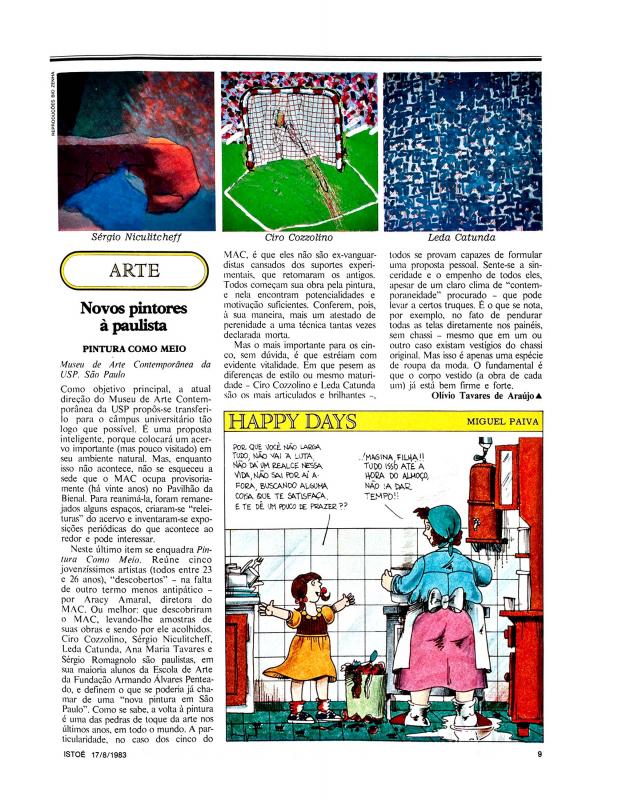In this text, Olívio Tavares de Araújo discusses the virtues of the work of Luiz Paulo Baravelli, who unlike other disciples of Wesley Duke Lee, provided a point of reference for a new generation of artists, yet he was largely written off as a commercial artist. Tavares de Araújo specifically addresses the exhibition Partes do Todo, which took place at the Museu de Arte Moderna de São Paulo in 1987, while the exhibition Partes de Agora, organized by Tavares de Araújo, was simultaneously held at the Galeria de Arte São Paulo.
A draftsman, painter, and printmaker, Luiz Paulo Baravelli (b. 1942), along with Carlos Fajardo and Rosé Resende who were fellow students of Wesley Duke Lee, created the Escola Brasil, an institute for instruction in art, in the early seventies. He was also the editor of the magazine Arte em São Paulo.
Olívio Tavares de Araújo is a journalist, art critic, and a filmmaker who has produced over thirty short films. In the seventies, he was the editor of visual arts and classical music for the magazine Veja which was distributed widely throughout Brazil. He is currently an art critic for the magazine Isto É.The various exhibitions he has curated focus on Italian-born artist Alfredo Volpi (1896–1988) and his books include Volpi: a construção da catedral (São Paulo: Museu de Arte Moderna, 1981) and Dois estudos sobre Volpi (Rio de Janeiro: FUNARTE, 1986).
For a related text, see Olívio Tavares de Araújo’s “Novos pintores à paulista” [doc. no. 1111350].

